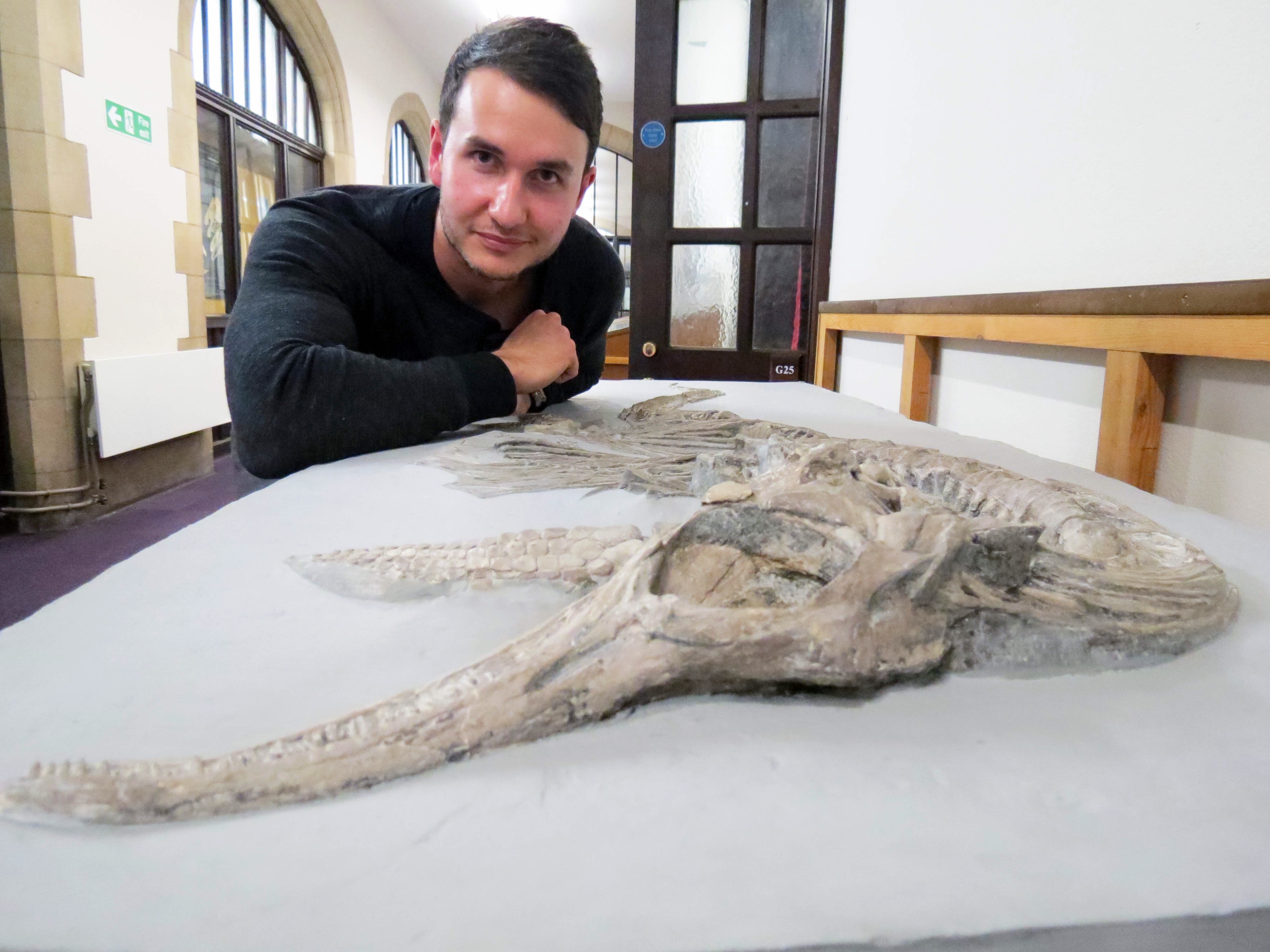Two new species of British ichthyosaur have been identified after a 6 year study examining several hundred fossils. The new species are identified from fossils collected over a century and a half ago.
Ichthyosaurs lived during the Age of Dinosaurs, but were ocean-dwelling reptiles that resembled dolphins or sharks. They were fierce predators, some growing up to 15 metres long. The new species lived around 200 million years ago in the early Jurassic period, a time when the UK was a small series of islands.
This scientific adventure began when palaeontologists Dean Lomax (Honorary Scientist at The University of Manchester) and Professor Judy Massare (Brockport College, New York) teamed up. Their studies took them across the UK, Europe and North America in search of British examples of Ichthyosaurus. They identified features in the skull and fins that distinguish the new species from others.
One of the new species was identified from a specimen at the University of Bristol – a complete skeleton which has been on public display in the School of Earth Sciences for many years. The species has been called Ichthyosaurus larkini, in honour of British palaeontologist Nigel Larkin. The name ‘Larkin’ means ‘Fierce’ – fitting for a fast-moving predator.
Dean said, “It’s quite amazing – hundreds of people must walk past this skeleton every day, yet its secrets have only just been uncovered. This specimen has received little in the way of scientific study, although this is not uncommon as there is so much material to see and only a finite amount of funding to see and study everything – in fact, much of my research is self-funded”.
The second species has an equally interesting history. The key specimen was probably collected from a quarry in Glastonbury, Somerset in the 1840s. It was sent to Delaware, USA by Edward Wilson of Tenby, South Wales, for his brother, Dr. Thomas Wilson, who donated the specimen to Philadelphia’s Academy of Natural Sciences in 1847, where it has remained ever since. The specimen has been in storage, and few people knew that it even existed.
“In my opinion, this specimen is the best example of Ichthyosaurus collected to date,” Dean added. “It paints such a cool picture too, having been found in a quarry in the Somerset countryside, cleaned, and then sent by boat to Philadelphia, and only now for it to be rediscovered – it’s like a good mystery book, piecing the story together!”
“As many Ichthyosaurus specimens have been found in Somerset we decided to name this in honour of the county and called the species Ichthyosaurus somersetensis. There are plans to have the specimen placed on display.”
As part of their extensive search, Dean and Judy were keen to visit collections that were unlikely to have Ichthyosaurus specimens, which meant other scientists may not have visited them previously. All examples of the new species come from locations that can no longer be accessed – for example, old quarries.
“It is our hope that other-similar fossils will be found in uninspected collections and brought to the attention of palaeontologists. Who knows what else is waiting to be (re)discovered?”







